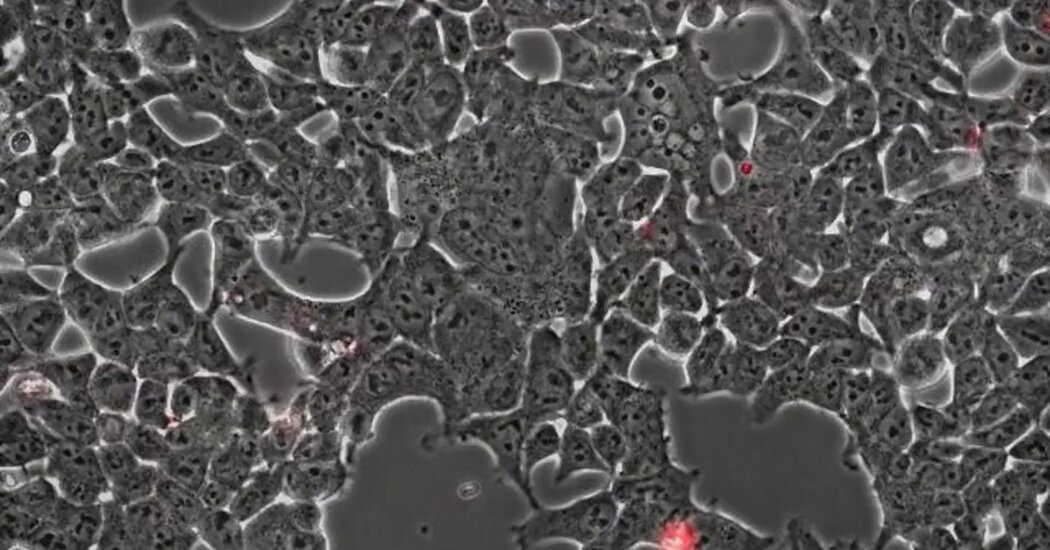The intruder stalks its prey with stealth and precision, preparing to puncture its quarry’s armor. Once inside, the aggressor forces its host to produce more intruders, and then causes it to explode, spewing out a multitude of invaders who can continue their rampage on a wider scale.
The drama, depicted in a microscopic video of SARS-CoV-2 infecting bat brain cells, provides a window into how the pathogen turns cells into virus-making factories before causing the host cell to die.
The video was produced by Sophie-Marie Aicher and Delphine Planas, virologists at the Pasteur Institute in Paris who won honorable mention in a microscopic video competition sponsored by Nikon, the photography company.
Filmed over 48 hours with an image recorded every 10 minutes, the footage shows the coronavirus as red spots circulating among a mass of gray blobs — the bat’s brain cells. After they are infected, the bat’s cells begin to fuse with neighboring cells. At some point, the entire mass bursts, resulting in the death of the cells.
Ms. Aicher, who specializes in zoonotic diseases — those that can be transmitted from animals to humans — said this infectious juggernaut was the same in bats and humans, with one important distinction: Bats ultimately do not get sick.
In humans, the coronavirus is able to evade detection and cause more damage in part by preventing infected cells from alerting the immune system to the presence of the invaders. But its special power is the ability to force host cells to fuse with neighboring ones, a process known as syncytia that allows the coronavirus to remain undetected as it replicates.
“Every time the virus has to exit the cell, it’s at risk of detection so if it can go straight from one cell to another, it can work much faster,” Ms. Aicher said.
She said she hoped the video would help demystify the virus, and make it easier for people to understand and appreciate this deceitful nemesis that has upended billions of lives.
“It’s important to help people get past the scientific jargon to understand that this a very sophisticated and clever virus that is well adapted to make humans sick,” she said.
Source: Read Full Article
